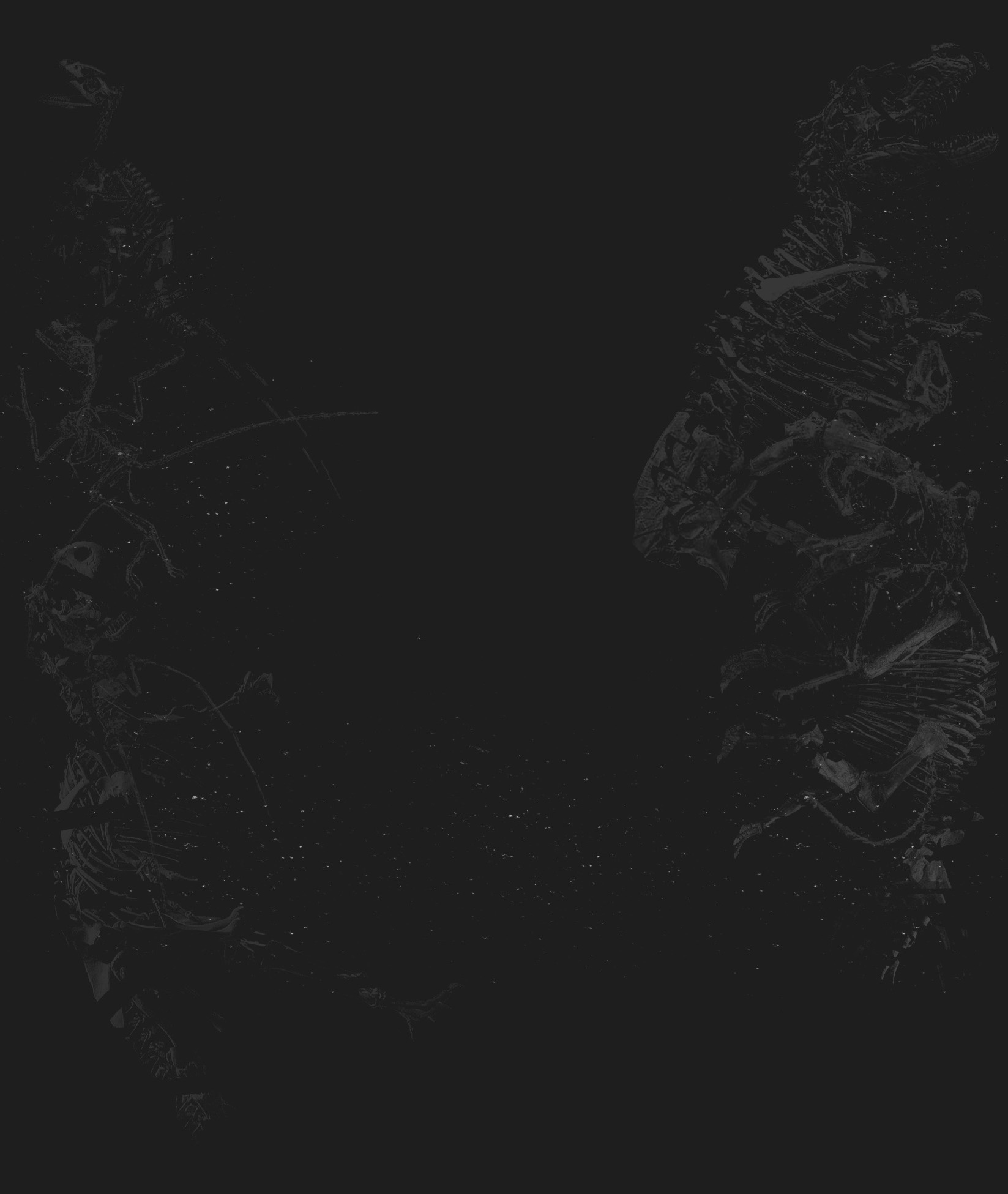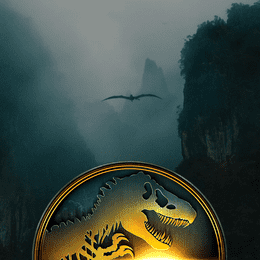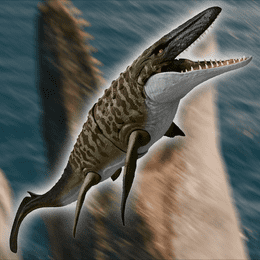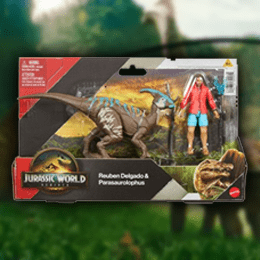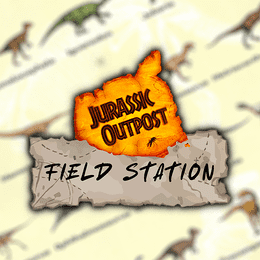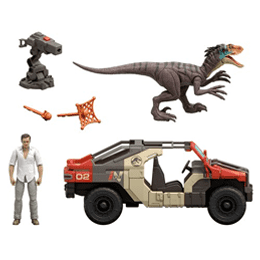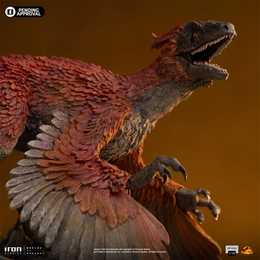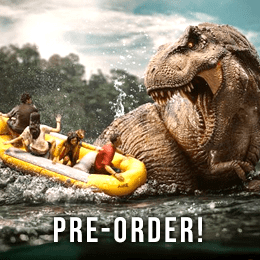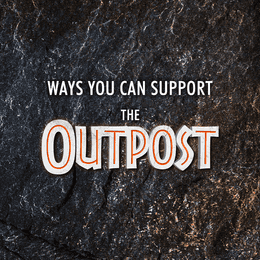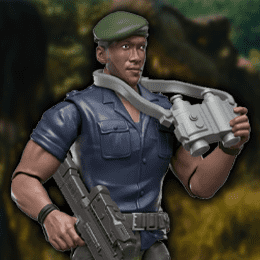Phil Tippett Interview
5th February 2014
Hollywood legend and Dinosaur Supervisor Phil Tippett took the time to speak with us through Skype about his work and the upcoming Jurassic World. Phil worked as Dinosaur Supervisor on Jurassic Park back in 1993, and is now joining the production team for the fourth film in the franchise.

Jack: Hello!
Phil: Hello!
Jack: It’s an honour to be speaking with you, honestly.
Phil: Oh shucks!
Jack: Haha thank you so much for doing this.
Phil: Oh it’s my pleasure.
Jack: If you’re happy I’d love to jump straight into it?
Phil: Sure, yeah.
Jack: You’ve been involved with stop motion for almost the entirety of your career now and you’ve seen it change and adapt over time. What role do you think stop motion has in modern day movie making?
Phil: I’m not so sure. You know, the last few features I don’t think did that well at the box office. So that’s certainly going to influence a great deal in regard to the studios. I know Leica has their own private funding so they can keep going if that’s what they choose.
So it’s very hard to say at least in terms of theatrical cinema. But there’s a proliferation of it out there. A lot of student film-makers are interested in stop-motion, quite a bit of stop-motion is showing up now in television commericals and it’s being used for webcasts and stuff like that.

Jack: Yeah, that’s true. So, what do you think about the evolution of visual effects? From your background, what do you think we can expect in the future?
Phil: Well I’m not that much of a prognosticator, I really don’t know. I mean mostly as machines get smarter certain functions will become hopefully more intuitive and less technical, and more artist based. It’s slowly moving in that direction. It’ll be pretty much things like that until the next technological revolution. Which may well be in regard to Jurassic Park, I was just on the horn with Jack Horner, the palaeontologist on Jurassic World and he was on Jurassic Park and the other pictures. And Jack is working on – genetically re-engineering a chicken to be more like a dinosaur, so once he gets that figured out we’re all out of work.
Jack: Haha! I’ve heard about that, I’ve got the book he wrote somewhere, it’s incredible.
Phil: Yeah it’s insane.
Jack: I really can’t wait to see more on that, adapting the DNA of a chicken is crazy in its own right, its Jurassic Park isn’t it, it’s come true.
Phil: It is! Yeah I can’t wait to see what, you know, what hatches.
Jack: What are your thoughts on the belief that stop motion is a seemingly dying art? Do you think that it is still a valuable skill that will continue to develop overtime?
Phil: I don’t know that it’s a dying art, I mean it’s certainly a craft that is not as viable in theatrical feature films for making creatures and weird stuff as it was, so that era has passed. But for the people that are still interested in the stuff, I’ve been working for quite some time on my own on short films and they’re primarily stop-motion. 90% stop-motion. So I’m here to kinda keep that alive and work with other people that are still interested in doing that kind of hands-on work.
Jack: I watched Prehistoric Beast, I’ve seen it before, but I watched it again today… it’s amazing how it still holds up after all this time. It’s the same with Jurassic Park, I mean the dinosaurs in that just hold up overtime. So I was just gonna ask really, how exactly were you brought on to the first Jurassic Park film?
Phil: Well I got a call from Kathy Kennedy right after we wrapped up Robocop 2 and she said “hey, Steven’s got this project that we’re working on and there’s a lot of dinosaurs and would you be interested?” I said “yeah sure” so they sent me the… the book had not yet been published so they sent me the galleys from the printers before it got printed and I read it, and it was gonna be really cool and then we just went into production.
Spent a great deal of time in pre-production, doing storyboards, laying things out, I think I was of more help with certain kinds of things. To make things a little bit more cinematic I think Crichton had a Apatosaurus as one of the first creatures that got seen and I lobbied for turning that into a Brachiosaurus or an Ultrasaurus which was far bigger and actually much more interesting to design, physiologically. And then I think for the stampede he had Hadrosaurs, and I suggested that they turn those into the Gallimimus which were creatures that could reach a much higher speed.
So that would be more theatrically dramatic and exciting. Little things like that, like scale. Crichton, on the page, didn’t worry about the scale of things, I think he had the Tyrannosaur pick-up one of the Ford Explorers and shake it around, kinda like the beast from 20,000 fathoms. But the scale didn’t work out, so I managed things like that.

Jack: You mentioned the Brachiosaurus and the Gallimimus scene, those are two of the most memorable scenes from the films, so I guess with the dinosaurs that Michael Circhton had written in it would have been different. Like you said the scale of a Brachiosaurus is much larger and when it’s revealed in the film it’s such an incredible moment.
Phil: Yeah, it worked out really well. We had all the stuff planned out. Michael Lantieri who handles all the floor effects, got a big crane and rigged a wire that went up to the leaves so the leaves on the top of the huge tree that he reaches up to, have this wire that you couldn’t see. And you know, Steven directed that of all the beats where the thing is looking up to the tree and raises up on his hind legs and reaches up with his mouth and gently plucks the leaves out. So that was all timed out on the set.
Jack: What is your most memorable moment from working on Jurassic Park back in 1993? Do you have any little known stories from making of the film?
Phil: Well for me the big thing that happened was the transition from doing things stop-motion or go-motion, which was the path we were headed down, dramatically changed when Dennis and his team at ILM did a number of tests proving that the computer could be able to hold up on our photographically representational image of our creature.

Jack: Was there a specific reason that you weren’t involved with The Lost World or Jurassic Park 3 and do you think that it led to some potential differences with those films, without your supervising?
Phil: Oh I don’t know, I was onto other projects by that time. Of course because of Jurassic Park I had my own studio and one of the distinctions there was, as a consequence of there not being that many computer graphic animators that had ever done that kind of creature work. We developed this input device, that was a very early form of motion capture that stop-motion animators could use and so we got that all in place. It was more of a stop-gap as an insurance policy and the T-Rex paddock scene and the Raptor kitchen scene were all done with these input devices. So that’s how we engineered a lot of that stuff.
Jack: What is your favourite part of the job – is it designing the dinosaurs or seeing them animated or is it something else?
Phil: You know for me the most interesting part is the pre-production, where you’re shaking everything and planning, figuring out how you’re going to do everything once you get on the set. And then you know, once you get on the set it’s just a matter of managing that and making sure that everything that you had planned is being shot correctly so that when you bring everything back to the studio it will all fall together. And occasionally trouble shooting, sometimes you have to make adjustments on the set when things aren’t exactly the way you thought they were gonna be.
And occasionally things will happen like, we were shooting the Tyrannosaur paddock scene and the scene where the lawyer gets taken out. We were there shooting, initially in the script/in the storyboards which are all very important in terms of budgeting because every single element of the storyboards are accounted for in the budget. And the scene was laid out, the tyrannosaurus is kinda like a big locomotive and it just blasts through the toilet that the lawyer is in and we got out there and setup the camera, and I told Steven “Hey you know what, it’d be really cool if we just do a take where we tilt up the camera and we see the Tyrannosaurus eating the guy.” And Kathy said “We’re not budgeted for that!” and Steven said “Yeah but we’ll go ahead and shoot it, it’s a good idea we’ll do that.” So little things like that come up just on the spot.

Jack: That’s brilliant, I didn’t know that, that’s fantastic. What was/is your favourite dinosaur to see on screen, especially after all the time that has gone into modelling and animating it?
Phil: I don’t know, everything is different and represents a different kind of a challenge. Each character’s a different kind of a character with it’s own shading and action so I’m kinda omnivorous in my taste for dinosaurs.
Jack: Obviously Jurassic Park 4 has been in development for the past 10 years, having numerous release years and scripts – were you ever involved with it before Colin Trevorrow came on board?
Phil: Oh no I’ve just recently got involved and my involvement remains to be seen. We’re partnering up with ILM again on this and I’ve gone down to the offices and talked to Colin a couple of times, but the real work and my involvement has not kicked in yet.
Jack: Oh right, ok. When do you think you’ll start, within the next couple of weeks?
Phil: I don’t know, we’re still figuring that out but it’s coming up pretty soon, we’re going to start production meetings and they’re off on location scout this week, so once they get back we’ll start figuring out where to move next.
Jack: How easier are things in 2014 compared to in 1993 in your line of work? I know you said you haven’t really started as much yet, but it must be completely different?
Phil: Well it is in terms of the technology at the time had never been used to do that kind of work before so it was kind of like a lot of blacksmithing. Just making and breaking a bunch of things. It was very complicated and of course the design and construction and the invention of the dinosaur input device was extremely complicated. We had these stop-motion armitures that had little encoders in them and that allowed you to move things by hand in stop-motion land and then into the computer and all of that was extremely complicated and assuming whatever it’s been like, 20 years or whatever, the technology has become more user friendly to a degree, and the skill of the model makers and animators and the painters and all that stuff, has risen dramatically so there’s a great deal of a much more skilled and talented people that have been doing this kind of work for a while now.

Jack: We’ve had a number of fan questions submitted through Twitter and Facebook, one of them being ’How long does it take to develop a dinosaur, from concept to final render?’
Phil: Ohhh boy. I don’t know, I mean that’s a process. Each one has its own peculiarities. As a result of that the designs are based off of close to 200 million years of genetic evolution, so a huge aspect of the design of the dinosaurs is already done for you from the bones. Then we consulted with palaeontologists and used some of the same tricks and techniques that they use for determining the weight of the creatures and try and find the closest living animals that might be similar to reference for motion and behaviour, and then a great deal of it was just extrapolation. On Jurassic [Park] Steven really wanted the scientific community to find what we did believable but at the same time we were making a dramatic movie so it’s always tricky to find where on the dial the dinosaur is behaving as a dinosaur, at the same time fulfilling its dramatic functions for the story.
Jack: I guess that was the case with the Dilophosaurus in the first film because I think it was more recently discovered that it didn’t spit poison, is that right?
Phil: Yeah, you know there’s a great deal of creative license that was taken, there’s a huge maybe factor in a great deal of this. When Jack Horner coaches us his coaching is pretty much on very general lines, “you can’t do this you can’t do that, this is what they are, this is not what they are”, and then there’s a pretty wide range of latitude and in talking to Jack he would say “yeah you can do that, yeah you can do that”.
On the first Jurassic Park we did this thing using stop-motion that we called the dinosaur bible, and we used that primarily for continuity, since there’s a lot of cross cutting between the computer-graphic dinosaurs and Stan Winston’s on-set animatronic characters, we had to be very clear about what we were doing editorially. So there was a great deal of that kind of thing that was happening.
One of the tests that I did, they were pitching that the dinosaurs, the Tyrannosaurus, they used frog DNA for some aspect of the Tyrannosaurus and that’s what the palaeontologists figured out – if you don’t move then the Tyrannosaurus won’t see you, a frog won’t do anything if the fly is not moving but as soon as the fly moves the tongue goes out and snaps it. So we tried to use that kind of behavioural cross-referencing with genetic engineering and so I did a test with one of the Raptors, I gave him a tongue just as like a little kind of a beak that we could use like a lizard tongue that shot out so we could test the air… and Jack Horner shot that down, he just said “no, can’t do that, that’s a lizard, dinosaurs aren’t lizards they’re birds”.
Jack: Jack Horner’s mentioned that there’s going to be a new dinosaur in Jurassic World, and obviously I know you’re not really allowed to speak about it, but are you allowed to say whether or not there will be new dinosaurs in the film?
Phil: There are no new dinosaurs, they’re all old.

Jack: Haha, I mean new to Jurassic Park then!
Phil: …perhaps.
Jack: A lot of the fan submitted questions are, as you would expect, questions which you probably can’t say… are you allowed to share any details as far as dinosaur colours go… will we be seeing any vehicles getting destroyed by dinosaurs in the film, but I assume you can’t answer them?
Phil: No I can not. I’ve been sworn to secrecy with threat of death.
Jack: Haha, ok. So the production team are heading to Kauai, Hawaii in March to start filming, you’ll obviously be on set, you’ll join them?
Phil: I’m not quite sure because we haven’t totally laid out what my deal is and what my co-responsibilities are so at this point we’re working through figuring out, still locking down the budget which is always an ongoing process on any film that you’ll work on.
Jack: Do you know if Jurassic World is relying more on VFX this time around or will the late Stan Winston’s legendary animatronics live on?
Phil: I think there’s going to be much more computer graphics and less on-set dinosaurs.

Jack: Do you prefer working with the animatronics or, well I guess more of your work is the ILM work, isn’t it?
Phil: Yeah, it’s ILM and Tippett Studio, that’s what we hang our hat on. It really depends on the director and the design of the way you go about shooting a movie and so it’s pretty much in their camp to figure out what they wanna do and again, there are budgetary concerns, there is a tremendous asset in having on-set things that you can actually interact with for the actors. Particularly with the kids in the first Jurassic Park. I think it really helped having things that they could actually see, but things have changed so much in 20 years where the photographically representational quality of computer graphics have gotten very close to an actual thing that you’ll photograph and I think part of the reasoning to make things more computer-graphic is things just go a little bit faster on set, and that’s a big consideration in designing the film.
Jack: With so many original Jurassic Park alumni coming back, will Jurassic World be a return to the spirit of the first film?
Phil: I believe that is the hope.
Jack: Okay… good! And finally, could you say one thing to get people even more excited about the film?
Phil: It’s gonna be fantastic!
Jack: Brilliant! Thank you so much for taking the time to do this, I really appreciate speaking to you!
Phil: Ok, it’s no problem at all!
It truly was an honour to speak with somebody you have looked up to for a very long time. Ever since I was a child, watching Jurassic Park and the behind the scenes VHS, I admired everyone who worked on that film. It inspired me to seek a career in the film industry, and speaking with Phil Tippett through Skype was really amazing. Thank you Phil and co at Tippett Studios for this interview, and for the great behind the scenes pictures!
Be sure to follow Phil on Twitter here.


